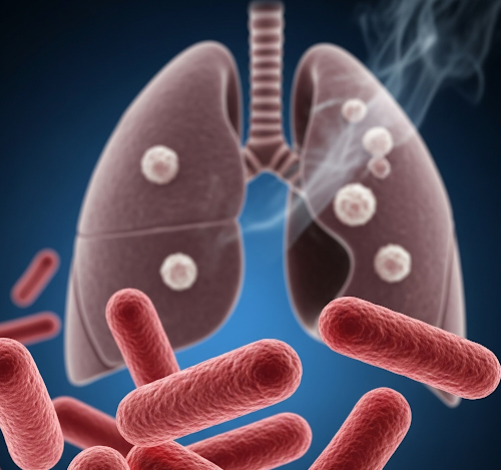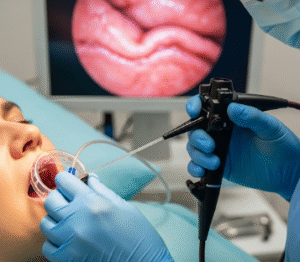Overview
Tuberculosis (TB) is a contagious bacterial infection caused by Mycobacterium tuberculosis, primarily affecting the lungs but capable of spreading to other organs such as the lymph nodes, kidneys, spine, and brain. TB remains a significant public health concern worldwide, including South Korea, where robust national programs have been implemented for early detection, treatment, and prevention. Modern Korean healthcare offers advanced diagnostic tools, multidrug therapy, and public health initiatives to manage and control TB effectively, reducing morbidity and preventing the spread of infection.
What is Tuberculosis (TB)?
Tuberculosis is an infectious disease that spreads primarily through airborne droplets when a person with active pulmonary TB coughs, sneezes, or speaks. TB can be classified into two main forms:
- Latent TB Infection (LTBI): The bacteria are present in the body but inactive, causing no symptoms and not contagious. Individuals with latent TB are at risk of developing active TB later.
- Active TB Disease: The bacteria are active, multiplying, and causing clinical symptoms. Active TB is contagious and requires immediate medical attention.
TB may also be classified based on the affected organ:
- Pulmonary TB: Most common form, affecting the lungs
- Extrapulmonary TB: Can involve lymph nodes, bones, joints, kidneys, meninges, or other organs
South Korea has implemented extensive TB screening, especially for high-risk populations, to detect both latent and active cases early.
Symptoms
TB symptoms vary depending on whether the disease is latent or active:
Active Pulmonary TB:
- Persistent cough lasting more than two weeks
- Coughing up blood or sputum
- Chest pain or discomfort
- Unexplained weight loss
- Fever and night sweats
- Fatigue and general weakness
- Loss of appetite
Extrapulmonary TB:
- Swollen lymph nodes
- Bone or joint pain
- Urinary symptoms in kidney TB
- Neurological symptoms if TB affects the brain or spinal cord
- General malaise and fever
Latent TB typically causes no symptoms, making screening critical for early detection.
Causes
Tuberculosis is caused by Mycobacterium tuberculosis, a slow-growing bacterium that infects the lungs or other organs. Transmission occurs when an infected person expels bacteria into the air through coughing, sneezing, speaking, or singing, and another person inhales the airborne droplets.
Risk of progression from latent to active TB is higher in individuals with:
- Weak immune systems, including those with HIV/AIDS
- Malnutrition or chronic illnesses such as diabetes
- Smoking or excessive alcohol consumption
- Close contact with someone with active TB
- Age extremes, particularly young children and the elderly
South Korean public health programs focus on reducing transmission through early detection, vaccination, and preventive therapy for high-risk populations.
Risk Factors
Certain factors increase the likelihood of contracting TB or developing active disease:
- Living or working in crowded environments (e.g., hospitals, prisons, shelters)
- Immunocompromised conditions, including HIV infection or long-term steroid use
- Chronic diseases such as diabetes or kidney failure
- Malnutrition and vitamin deficiencies
- Prior TB infection or incomplete TB treatment
- International travel to areas with high TB prevalence
Korea’s national TB control program targets high-risk groups through regular screening, vaccination, and preventive treatment.
Complications
Untreated or poorly managed TB can lead to severe complications:
- Extensive lung damage and respiratory failure
- Spread of TB to other organs (miliary TB)
- Pleural effusion or fluid accumulation around the lungs
- Chronic infections and secondary bacterial pneumonia
- Drug-resistant TB if treatment is incomplete or improperly administered
- Infertility or skeletal deformities in extrapulmonary TB affecting reproductive organs or bones
- Neurological deficits if TB affects the brain or spinal cord
- Death in severe or untreated cases
Early diagnosis and proper treatment in South Korea reduce the risk of these life-threatening complications.
Prevention
Preventive measures for TB focus on reducing exposure and strengthening immunity:
- BCG vaccination: Administered to infants in South Korea to protect against severe forms of TB in children
- Early screening: Particularly for healthcare workers, close contacts of TB patients, and immunocompromised individuals
- Preventive therapy: For latent TB using medications such as isoniazid or rifampin
- Good ventilation and hygiene: Minimizing exposure in crowded or enclosed spaces
- Health education: Raising awareness about TB transmission, symptoms, and the importance of completing treatment
- Nutrition and lifestyle: Maintaining a healthy immune system through balanced diet and avoiding smoking or excessive alcohol
Korean public health authorities implement nationwide campaigns to educate communities and ensure adherence to preventive measures.
Treatment Options in Korea
Treatment of TB in South Korea is standardized, effective, and tailored to the type of TB infection:
Diagnosis:
- Chest X-ray and CT scans for pulmonary TB
- Sputum smear microscopy and culture for bacterial confirmation
- PCR and molecular tests for rapid detection and drug susceptibility
- Blood tests and imaging for extrapulmonary TB
Medical Treatments:
- First-line anti-TB drugs: Isoniazid, rifampin, ethambutol, and pyrazinamide for 6–9 months
- Second-line drugs: For multidrug-resistant TB (MDR-TB) including fluoroquinolones and injectable agents
- Supportive care: Nutritional support and management of symptoms such as cough or fever
- Directly Observed Therapy (DOT): Ensuring adherence to medication regimen to prevent resistance
Advanced Care:
- Hospitalization for severe cases or complications
- Surgical interventions in rare cases for damaged lung tissue or obstructed airways
- Multidisciplinary care involving pulmonologists, infectious disease specialists, and nurses to monitor progress
South Korea’s healthcare system ensures comprehensive care for TB patients, combining early detection, effective medication, supportive care, and public health measures to control the spread of this infectious disease.













